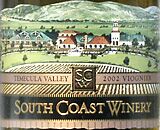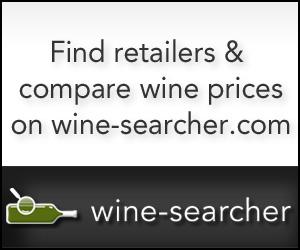|
U.S. Dietary Guidelines and wine
Moderate consumption of wine and other alcoholic beverages remains officially healthy, maybe, under appropriate circumstances, at least for those who already drink moderately and aren't about to get pregnant or operate complicated machinery. That's the word from the new Dietary Guidelines for Americans, a hefty document jointly issued every five years by the U.S. departments of Agriculture and Health and Human Services. The new guidelines - the sixth since the series began in 1980 - were unveiled on Wednesday. Much of the media attention to the latest Guidelines has focused on its increased emphasis on fitness, urging Americans to "aim for a healthy weight" and to "be physically active each day." That means 30 minutes of exercise daily to maintain good health, 60 minutes a day "to prevent gradual, unhealthy body weight gain in adulthood," and up to 90 minutes for weight loss in adults. That's good advice for health, if not easy to incorporate in a busy lifestyle. As in the past, though, the Guidelines are much more cautious about alcohol, suggesting, in short: "Those who choose to drink alcoholic beverages should do so sensibly and in moderation," defined as up to one drink per day for women and up to two drinks per day for men. (A "drink" is defined as a five-ounce glass of wine, a 12-ounce serving of beer or a 1 1/2-ounce shot of 80-proof liquor.) This discreet and distinctly soft-pedal approach is likely the result of intensive lobbying by competing advocacy groups. Indeed, both the California Wine Institute and the usually anti-alcohol Center for Science in the Public Interest (CSPI) praised the 2005 Guidelines in statements issued within moments after its release. Wine Institute commended the agencies "on their balanced approach." Its President and CEO Robert P. Koch added, "We support the key recommendation which maintains the emphasis on moderate consumption ... Since ancient times, wine has been appreciated as an enhancement to meals and a beverage of enjoyment by cultures throughout the world." CSPI, meanwhile, hailed the Guidelines as "the most health-oriented ever," but was silent about its advice on alcohol. "As good as the Dietary Guidelines is, it will do little to improve the public's health without vigorous efforts to improve the food environment and communicate them with the public," Executive Director Michael F. Jacobson wrote. "Industry has done little voluntarily to implement past Dietary Guidelines for Americans ... government regulatory agencies need to take ... action." Behind the scenes, it appears that the government agencies were subject to a flurry of advice from Wine Institute, CSPI and other advocacy groups arguing both for and against the benefits of alcohol. Deep in one of the supporting documents was an intriguing list of recommendations and advice that the agencies had received from the public. There was a demand that it define "moderate" as "no more than one drink a day," and a counter-proposal that it not define moderation at all. Regulators were urged to promote the purported health benefits of wine, and encouraged to downplay them. And dueling requests called on the departments to include the statement that "alcoholic beverages have been used to enhance the enjoyment of meals throughout human history," or to omit that statement. (In fact, that wording - promoted by Wine Institute - made it into the 1996 Guidelines but was absent in 2000 and 2005.) Admonitions that the agencies avoid encouraging people to start drinking alcohol for health reasons also apparently prevailed.
The full report, linked below, goes into more detail, but its "Key Recommendations" summary on alcoholic beverages boils down to three "bullet points":
WEB LINKS
If you'd like to look over the public comments in detail - it makes interesting reading, if the minutiae of advocacy lobbying intrigues you ... see the Dietary Guidelines Advisory Committee's Summary of Recommendations from Public Comments,
Wine Institute's statement in response to the 2005 Guidelines is here:
And the Center for Science in the Public Interest statement is here.
TALK ABOUT WINE ONLINE If you prefer to comment privately, feel free to send me E-mail at wine@wineloverspage.com. I'll respond personally to the extent that time and volume permit.  Southern California's Wine Country: Temecula Valley Winter Barrel Tasting Southern California's most popular wine region opens its doors for a two-day food and wine pairing event showcasing wines still in the barrel. This event gives wine lovers a peek at future wines produced by our 20 member wineries. Just 4 short miles off of I-15, the beautiful Temecula Valley wine region is surrounded by gently rolling hills and dramatic mountain ranges. It has been a source of award-winning wines for over 30 years. The region produces a number of different wines from valley floor vineyards and hillside plantings. The two-day barrel tasting allows visitors and locals to leisurely visit all 20 wineries (one time each over the two-day period) that make this viticultural region so special. Join us for this once-a-year trip into the cellar to sample wines directly from the barrel. This is your opportunity to meet winemakers, purchase "futures" of limited release wines and sample foods perfectly matched to the wines being tasted. Barrel tasting with food pairing is featured at each one of the 20 wineries. You drive to the wineries you would like to visit, or arrange for alternative transportation.
Click As I mentioned in Monday's edition, we're focusing on Southern California's Temecula region this week in connection with our sponsorship featuring Temecula Valley Winter Barrel Tasting. Here's my report on a first-rate Viognier from South Coast Winery.
Transparent, pale-gold in color, this luscious white wine breathes overtly peachy aromas, almost a peach-nectar scent, with back notes of musky melon and spice. Full, ripe and fresh, it offers an impression of sweetness at first, but snappy acidity brings it into balance, and it finishes dry, carrying its rather hefty 14.1 percent of alcohol well. Light oak treatment (five months in French oak barrels) adds creaminess without overwhelming wood. A good, rich presentation of Viognier, it's an intriguing alternative to New World Chardonnay. From fruit grown in the Langoria Family Vineyards, the label says. (Jan. 10, 2005) FOOD MATCH: Its luscious, forward fruit and impression of sweetness should make it a winner with richer seafood, lobster or crab. It went very well with a simple omelet filled with chopped prosciutto and sharp cheese. VALUE: Available at the winery and online through its E-commerce pages, it's a good buy, toward the lower end of the range for quality California Viognier. WHEN TO DRINK: Best drunk up fresh (note that the 2003 is now available at the winery), but its power and balance will hold it in the cellar or wine rack for at least another year or two.
PRONUNCIATION:
WEB LINK:
FIND THIS WINE ONLINE:
To browse through a variety of wines from Temecula on Wine-Searcher.com, see
SUBSCRIBE: Administrivia To subscribe or unsubscribe from The 30 Second Wine Advisor, change your E-mail address, or for any other administrative matters, please use the individualized hotlink found at the end of your E-mail edition. If this is not practical, contact me by E-mail at wine@wineloverspage.com, including the exact E-mail address that you used when you subscribed, so I can find your record. We do not use our E-mail list for any other purpose and will never give or sell your name or E-mail address to anyone. I welcome feedback, suggestions, and ideas for future columns. To contact me, please send E-mail to wine@wineloverspage.com All the wine-tasting reports posted here are consumer-oriented. In order to maintain objectivity and avoid conflicts of interest, I purchase all the wines I rate at my own expense in retail stores and accept no samples, gifts or other gratuities from the wine industry.
Friday, Jan. 14, 2005 |

 South Coast Winery 2002 Temecula Valley Viognier ($14)
South Coast Winery 2002 Temecula Valley Viognier ($14)



